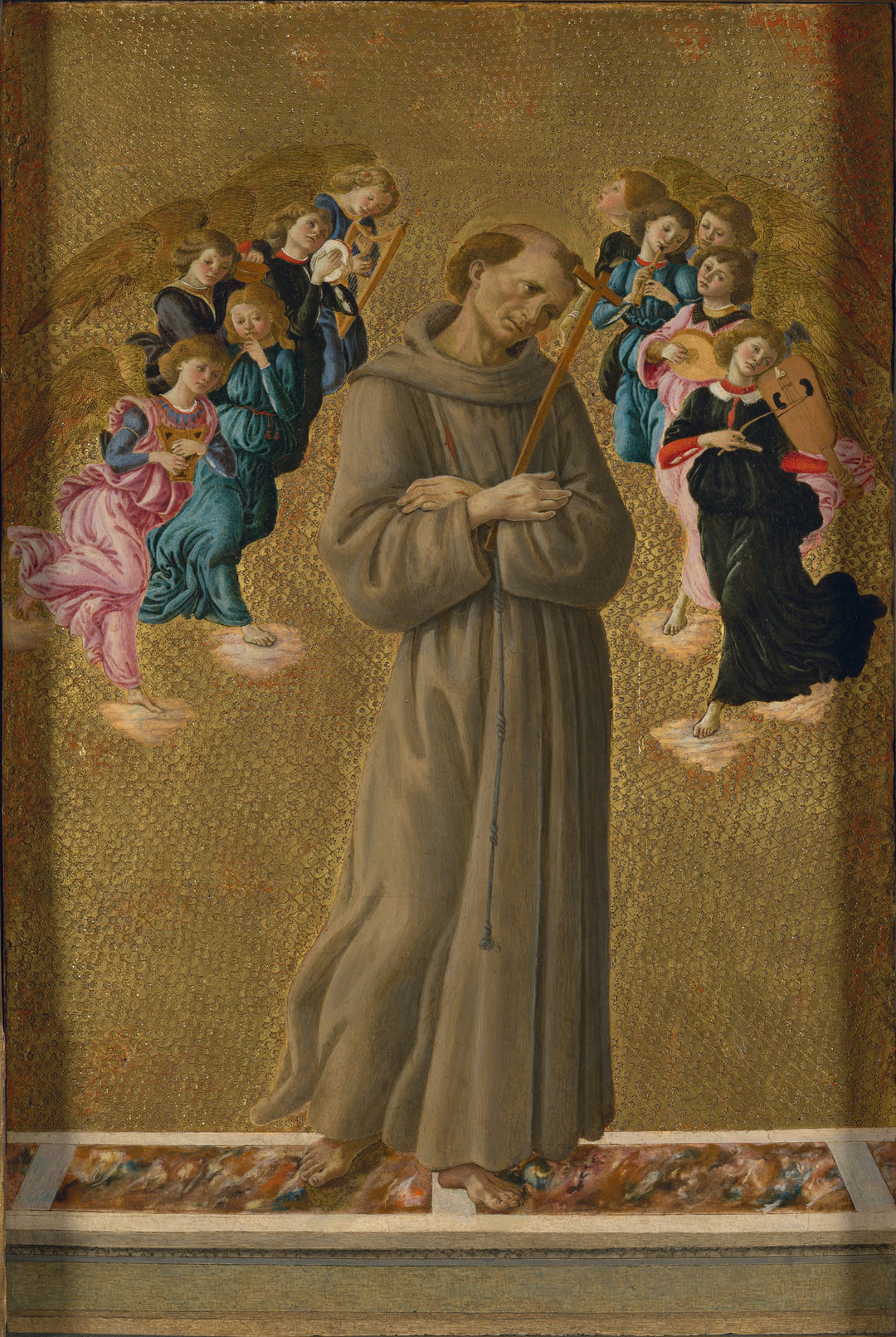
Saint Francis of Assisi with Angels - Sandro Botticelli
| Author: | Botticelli |
|---|---|
| Title: | Saint Francis of Assisi with Angels |
| Original location: | The National Gallery, Londres, Gran Bretaña |
| Year: | 1475-1480 |
This painting, called "Saint Francis of Assisi with Angels," attributed to Sandro Botticelli according to the most recent research and housed in the National Gallery in London, depicts the saint standing over a large brazier, evoking the famous "ordeal by fire" he proposed to Sultan Al-Kamil during their encounter in 1219, in the midst of the Fifth Crusade. At that time, Europe faced an imminent threat due to the advance of Muslim troops, and Saint Francis, unarmed, appeared before the sultan dressed as a vagabond, intending to help at this crucial moment in world history. He proposed that he and a Muslim imam walk over burning coals to prove the truth of their respective religions. When Al-Kamil Muhammad al-Malik asked, "Why, if Christians are men of peace, do they come to make war?" the poor man of Assisi answered with tears in his eyes, saying, "Love is not loved." The sultan was deeply impressed by this man, who, with the appearance of a beggar and unafraid of death, had asked to pass through every defensive line of his army in God's name, each opening to the Muslim cry, "Make way for the man of God." Thus, walking, he crossed even the sultan's personal guard. According to accounts, Al-Kamil finally declared: "If all Christians were like you, it would be very easy to be a Christian." Although he did not convert at that moment for fear of reprisals from his coreligionists, he asked Saint Francis to send someone to baptize him before he died.
This historic encounter allowed for two years of truce, the return of Jerusalem, and the beginning of the Franciscan presence as custodians of the holy sites in "the Holy Land" to this day. The friars minor (the Franciscans) have been in charge of many of the holy sites in Israel and elsewhere since 1219 thanks to this event.
Botticelli’s work, with its harmonious composition and use of tempera on panel, reflects the transition from the late Gothic to the early Renaissance, anticipating elements of the High Renaissance. The depiction of Saint Francis surrounded by angels, standing over the enormous brazier, with its light and brilliant brushwork and the notable absence of outlines, evokes a taste of Impressionism from the avant-garde, placing this piece among the finest representations of the Saint.
Botticelli, for his part, once again makes the Messiah present in the image of Francis; amid the vicissitudes of human history, he speaks of his role as a mediator between nations and as a man who carries with him, as a gift to those who receive him, "Peace and good will."